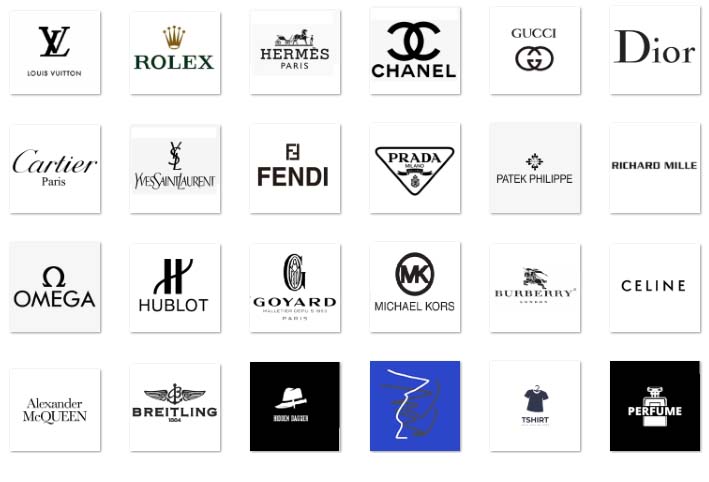prada functional or divisional | prada's 6 principles prada functional or divisional The six types of organizational structures discussed here include functional, divisional, . Earn 35.5 points. Notes. Crafted from cotton and shaped to an oversized fit. Our signature is on the chest and back, from London to Tokyo - this is the Underground T-Shirt. Your timeless wardrobe essential that can be worn anywhere, anytime.Size & Fit. Model wears: UK S/ EU S/ US XS. Model's height: 176cm/5'9.5" Look After Me. Machine wash according to instructions on care label. About Me. Body: 100% Cotton. .
0 · why is prada so independent
1 · prada's 6 principles
2 · prada health and safety
3 · prada group hse
4 · prada acquisitions
5 · is prada still in business
6 · functional and divisional structure
Ontdek het Datejust 41-horloge van Oystersteel op de officiële Rolex .
2.1. Function and legal effects of the organisation model. 2.2. The content of the organisation model. 2.3. Tools for drafting the Organisation Model. 2.4. The features of an effective Organisation Model. 2.5. Organisation Model and Code of Ethic. 2.6. Organisation Model and .Summary. Reprint: R1209A A few decades ago, Prada believed that its future depended on .
Organizational structures define the hierarchy or an organization, and determine the way .Today the Prada brand offers men’s and women’s leather goods, ready-to-wear and footwear, .The six types of organizational structures discussed here include functional, divisional, . A functional—or role-based—structure is one of the most common .
A divisional organizational structure is a system in which the business is divided .
In a matrix organization, employees report to both a functional manager .PRADA GROUP PURPOSE. With a thoughtful and pioneering vision, the Prada Group is a .
A divisional structure is best for large organizations with multiple product lines or those operating in various geographic regions. 3. Matrix structure. A matrix structure is a hybrid of the functional and divisional structures. .
Divisional. Divisional org structures organize employees based on markets, products, or locations. The company will use an appropriate org structure within each division depending on its purpose or function. The challenge with organizational design in a divisional model is that each division often has different teams, challenges, and priorities.
functional. multi-divisional. client-based. matrix. Functional structures are extremely efficient when the organization. a) has a relatively narrow focus, few product lines or services, and a stable environment. b) is involved in a wide array of products . A Matrix Structure is a complex Organisational framework that combines elements of both functional and divisional Structures. In this Structure, employees maintain dual reporting relationships. They report to both their Functional Manager and Divisional Manager. a) Functional Manager oversees employee’s skill-based performance and their project.
Functional Structure: Divisional Structure: I. Formation: Formation is based on functions. Formation is based on product lines and is supported by functions. Specialisation. II. Specialisation: Functional specialisation. Product specialisation. III. Responsibility: Difficult to fix on a department. Easy to fix responsibility for performance. IV . By combining elements of both functional and divisional structures, hybrid organizational structures facilitate effective communication and collaboration, ultimately leading to improved responsiveness in dynamic markets. Companies employing this approach can leverage the benefits of a chain of command alongside the agility offered by matrix .
Key characteristics of a divisional structure. Here are some common characteristics of a divisional organizational structure: Autonomy within divisions: Each division typically operates as its own entity with its own set of financial resources, management structure, and performance targets.It has the autonomy to make decisions based on the needs of its specific market or product areas.Answer to Functional and divisional structures (Connect)The. Your solution’s ready to go! Enhanced with AI, our expert help has broken down your problem into an easy-to-learn solution you can count on.
This type of departmentalization combines functional and divisional structures, allowing employees to report to more than one boss. It is used in complex organizations where employees work on multiple projects or products and require expertise from various functional areas. Product DepartmentalizationThe six types of organizational structures discussed here include functional, divisional, geographic, matrix, networked/team, and virtual. The functional structure, shown in Figure \(\PageIndex{3}\), is among the earliest and most used organizational designs. This structure is organized by departments and expertise areas, such as R&D (research . Functional structure Divisional structure ; Meaning: Functional structure groups people according to expertise, such as placing all accountants under the accounting or revenue department. A divisional organization organizes them across product or service lines, similar to having a marketing department for each specific product. .
When comparing divisional and functional organizational structures, several key attributes stand out. One major difference is the way employees are grouped within the organization. In a divisional structure, employees are grouped based on products, services, or geographic locations, while in a functional structure, employees are grouped based .
A functional—or role-based—structure is one of the most common organizational structures. The second type—the product- or market-based structure—is also hierarchical, vertical and centralized.Fairfield, K. D. (2016). Understanding Functional and Divisional Organizational Structure. Management Teaching Review, 1(4), 242–251. doi:10.1177/2379298116661843
2.1. Function and legal effects of the organisation model. 2.2. The content of the organisation model. 2.3. Tools for drafting the Organisation Model. 2.4. The features of an effective Organisation Model. 2.5. Organisation Model and Code of Ethic. 2.6. Organisation Model and Groups of Companies. 3.Summary. Reprint: R1209A A few decades ago, Prada believed that its future depended on gaining market share through acquisitions in Western Europe and the United States. Today, however, it.
Organizational structures define the hierarchy or an organization, and determine the way information flows within it. When establishing a structure, business leaders should decide how a structure best aligns with the company’s principles and goals and how it outlines and sets up tasks for each employee. In the anatomy of business, the overall . A functional structure groups employees based on specializations, like having all accountants in the accounting or revenue department. A divisional structure groups them across product or service lines, like having a marketing department for each individual product.Today the Prada brand offers men’s and women’s leather goods, ready-to-wear and footwear, combining contemporary, innovative and sophisticated design with the uniqueness of handcrafted products. Prada also operates in the eyewear and fragrance sector. The Prada “garden factory” in Valvigna (Arezzo)
The six types of organizational structures discussed here include functional, divisional, geographic, matrix, networked/team, and virtual. The functional structure, shown in Figure \(\PageIndex{3}\), is among the earliest and most used organizational designs. A functional—or role-based—structure is one of the most common organizational structures. The second type—the product- or market-based structure—is also hierarchical, vertical and centralized. A divisional organizational structure is a system in which the business is divided into segments by product, market or geographies, whereas organizations are typically grouped by departments and job roles.
In a matrix organization, employees report to both a functional manager (responsible for overseeing their professional development and work quality) and a divisional or project manager (responsible for the specific project or product they are working on).

why is prada so independent
prada's 6 principles
$154.48
prada functional or divisional|prada's 6 principles



























